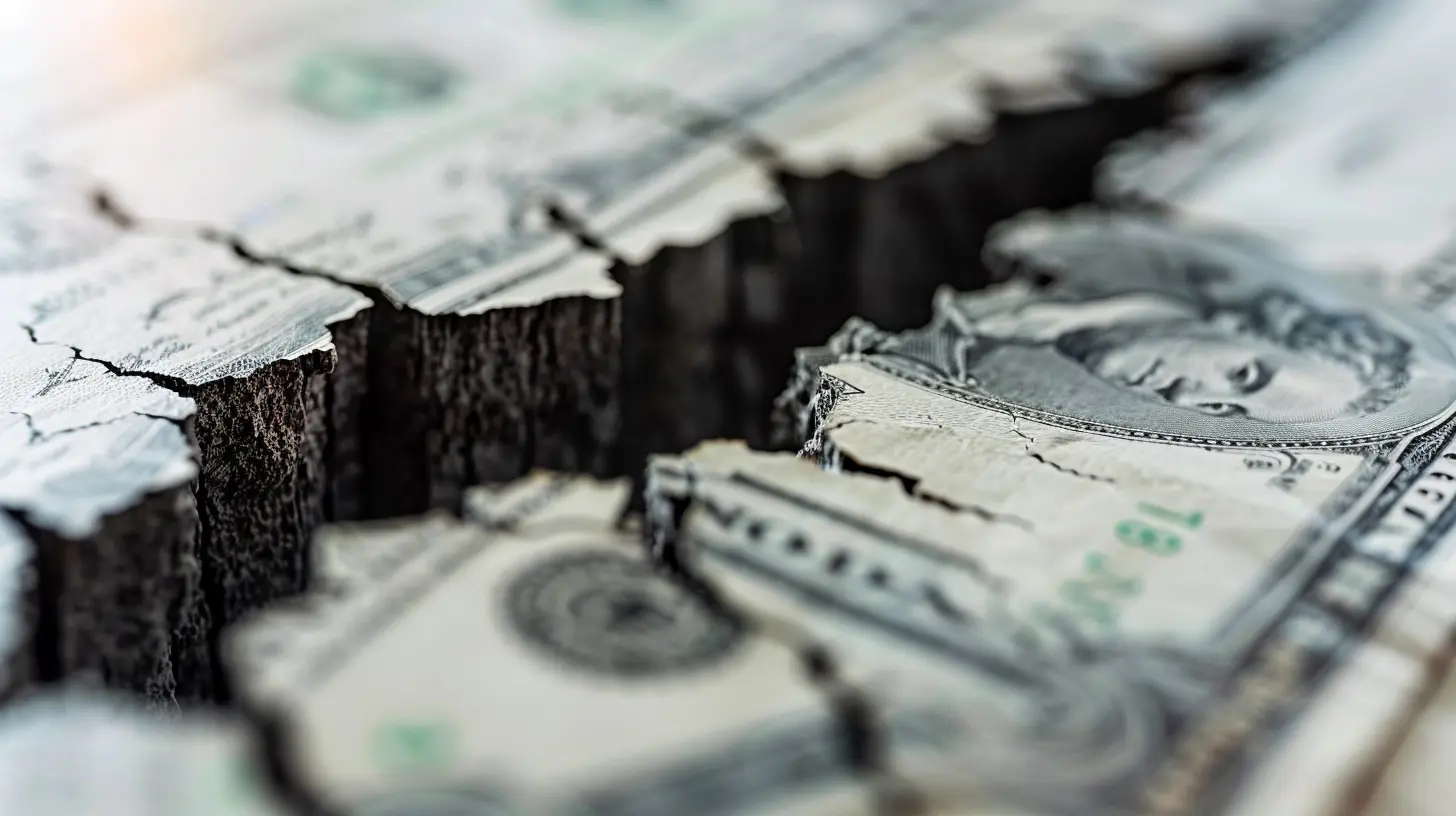How the Yield Curve Predicts Economic Recessions
24 September 2025
Ever heard of the yield curve? It may sound like stock trader jargon, but it’s actually a powerful, easy-to-understand tool that could tip you off when the economy is heading for rough waters. That's right — this simple graph has a surprisingly good track record of predicting economic recessions. And once you understand how it works, you'll start to see just how useful it can be.
Let’s break it down together in this friendly, no-fluff guide.
What Is the Yield Curve?
Okay, first things first. What exactly is the yield curve?At a basic level, the yield curve is a graph that shows the relationship between interest rates (or yields) and the maturity lengths of U.S. government bonds (like Treasury bonds). Think of it as a snapshot of investor expectations — what they think will happen with the economy, inflation, and interest rates in the future.
When you hear “short-term” and “long-term” yields, we’re talking about how much you earn from bonds of different durations — say, a 2-year Treasury note versus a 10-year one.
Normally, investors expect more return the longer they tie up their money (makes sense, right?). So the yield curve usually slopes upward — longer-term bonds pay higher yields than short-term ones. But sometimes that curve flips… and that’s when things get interesting.
Understanding the Normal Yield Curve
Picture a gentle hill sloping upward from left to right. That’s a healthy, “normal” yield curve. It tells us that long-term investments are riskier (as they should be), so investors demand higher returns to compensate for the unknowns like inflation, interest rate hikes, or economic slowdowns.Here’s how it looks:
- Short-term bonds (like 3-month or 2-year Treasuries): Lower yields
- Long-term bonds (like 10-year or 30-year Treasuries): Higher yields
This normal curve usually signals that the economy is growing, consumers are spending, and businesses are investing.
So What’s an Inverted Yield Curve?
Now imagine that hill flipping upside down. That’s called an inverted yield curve — when short-term interest rates are higher than long-term rates. It’s rare, it’s weird, and economists get twitchy when they see it.So why does this happen?
When investors think the economy’s heading south, they start moving their money into long-term bonds for safety. More demand for those bonds pushes prices up and, in turn, the yields down. Meanwhile, short-term yields may stay elevated due to Fed policies.
That’s how you end up with an upside-down curve. And historically, it has been a red flag that a recession might be lurking.
The Yield Curve’s Track Record as a Predictor
You know what's wild? The yield curve has predicted every U.S. recession in the last 50 years — usually about 6 to 18 months in advance.Take these examples:
- The 2000 dot-com bust? Yep, preceded by an inverted yield curve.
- The 2008 financial crisis? Again, the yield curve flipped in 2006.
- Even the COVID-19 recession in 2020 had warning signs from a yield curve inversion in 2019.
That’s not a coincidence. It’s reputation is rock solid.
Why Does an Inverted Yield Curve Spell Trouble?
Let’s keep it simple. Here’s what’s going on behind the scenes:1. Investor Sentiment Shifts
- Investors start fearing a downturn. They buy more long-term bonds, driving down those yields.
2. Short-Term Rates Stay High
- The Federal Reserve may keep short-term interest rates high to combat inflation.
3. Credit Becomes Costly
- Banks borrow short-term and lend long-term. When short-term rates are higher, lending becomes less profitable. As a result, they tighten credit.
4. Reduced Spending and Investment
- With tighter lending conditions, businesses and consumers may cut back on spending and borrowing — a classic recipe for slowing economic activity.
Put simply: the inverted curve is like a sick canary in a coal mine. It’s not the cause of the downturn, but it sings when things are about to go wrong.
Yield Curve Types: A Quick Breakdown
Not all curves are doom and gloom. Here’s a rundown of the main shapes:- Normal Yield Curve: Economy is expected to grow. All is well.
- Flat Yield Curve: Short-term and long-term yields are nearly the same. Could mean a transition.
- Inverted Yield Curve: Short-term yields are higher than long-term yields. Historically signals a recession.
- Steep Yield Curve: Long-term bonds offer much higher yields. Usually happens after a recession, as recovery begins.
Each shape tells its own story — kind of like reading clouds before a storm or sunshine.
The Role of the Federal Reserve
The Fed plays a key role in yield curve behavior.When it raises the federal funds rate to combat inflation (like it’s been doing lately), it pushes up short-term interest rates. If the economy can’t keep pace, long-term yields might not rise as much. That flattens or inverts the curve.
So in a way, the yield curve is also a mirror reflecting the Fed’s current strategy — and whether markets believe it’ll work.
Does the Yield Curve Always Get It Right?
Nope. Like every predictive tool, it’s not foolproof.There have been times where the yield curve inverted but no recession followed (these are called "false positives"). And sometimes curves flatten due to global demand dynamics that aren’t tied to U.S. economic fears.
So while it has a solid track record, don’t take it as gospel. Think of it as one clue — a strong one — but not the only piece of the puzzle.
Can Regular Folks Use the Yield Curve?
Absolutely. You don’t need a PhD in economics to understand it or track it. Here’s how you can use it:- Stay informed: Check the yield curve from reliable sources like the U.S. Treasury or Federal Reserve websites.
- Watch the 2-Year vs. 10-Year spread: This is the most closely watched curve. When it goes negative (inverts), analysts start bracing for impact.
- Use it for planning: Business owners, investors, and even job seekers can use yield curve signals to prep for potential economic shifts.
It won’t tell you exactly when a recession will hit — but it rings the warning bell early enough to adjust your sails.
Yield Curve and the Stock Market
Here's a curveball (pun intended): Even if the yield curve inverts, the stock market doesn’t always tank immediately.In fact, stocks have sometimes rallied for a year or more after an inversion!
But eventually, as economic conditions tighten, earnings drop and equity markets feel the pinch.
So if you're investing, an inverted curve isn't a sign to panic, but it might be time to reevaluate your portfolio, hedge your bets, or shift into more defensive sectors (like utilities or consumer staples).
Tips to Prepare for a Potential Recession
If the yield curve is flashing warning signs, what should you do?Here are a few smart moves:
- Build an emergency fund: Cushion your finances in case of job loss or income disruption.
- Reduce high-interest debt: Especially credit card debt, which can become a bigger burden in a downturn.
- Diversify your investments: Don't put all your eggs in one basket, especially not in high-risk stocks.
- Consider recession-proof industries: Think healthcare, utilities, and consumer staples — things people need no matter what.
Being proactive is the name of the game.
Final Thoughts
So there you have it — the yield curve may look like a boring line on a chart, but it packs a punch when it comes to predicting recessions. It’s not just for economists or Wall Street traders. Regular folks like you and me can use it to get a sense of where the economy might be headed and take action before the storm hits.Think of the yield curve as your economic weather forecast. It won’t always be perfect, but when the pressure starts dropping and dark clouds gather, it’s worth paying attention.
Ready to start tracking it? You might just be ahead of the curve.
all images in this post were generated using AI tools
Category:
Economic IndicatorsAuthor:

Knight Barrett
Discussion
rate this article
1 comments
Harley Robinson
This article effectively elucidates the yield curve's role in predicting economic recessions. Its clear explanations and relevant examples offer valuable insights for both novice and experienced investors.
October 3, 2025 at 12:39 PM

Knight Barrett
Thank you for your feedback! I'm glad you found the article informative and accessible for all levels of investors.


